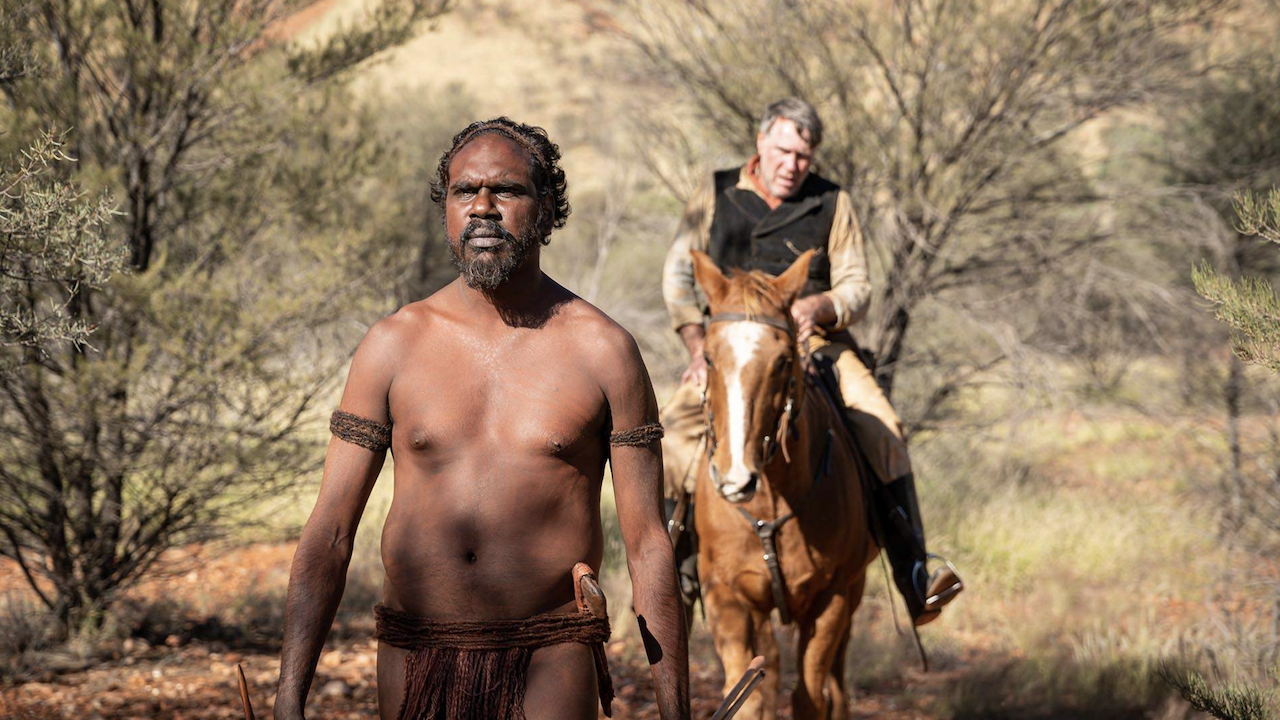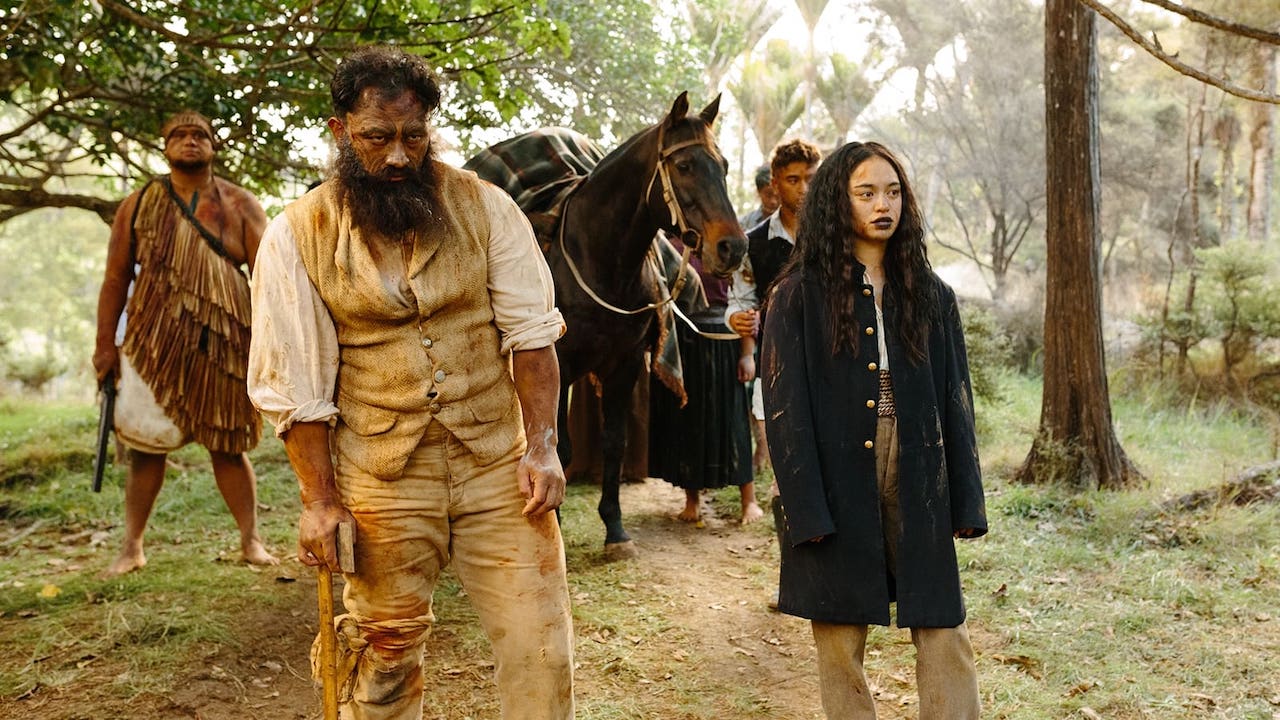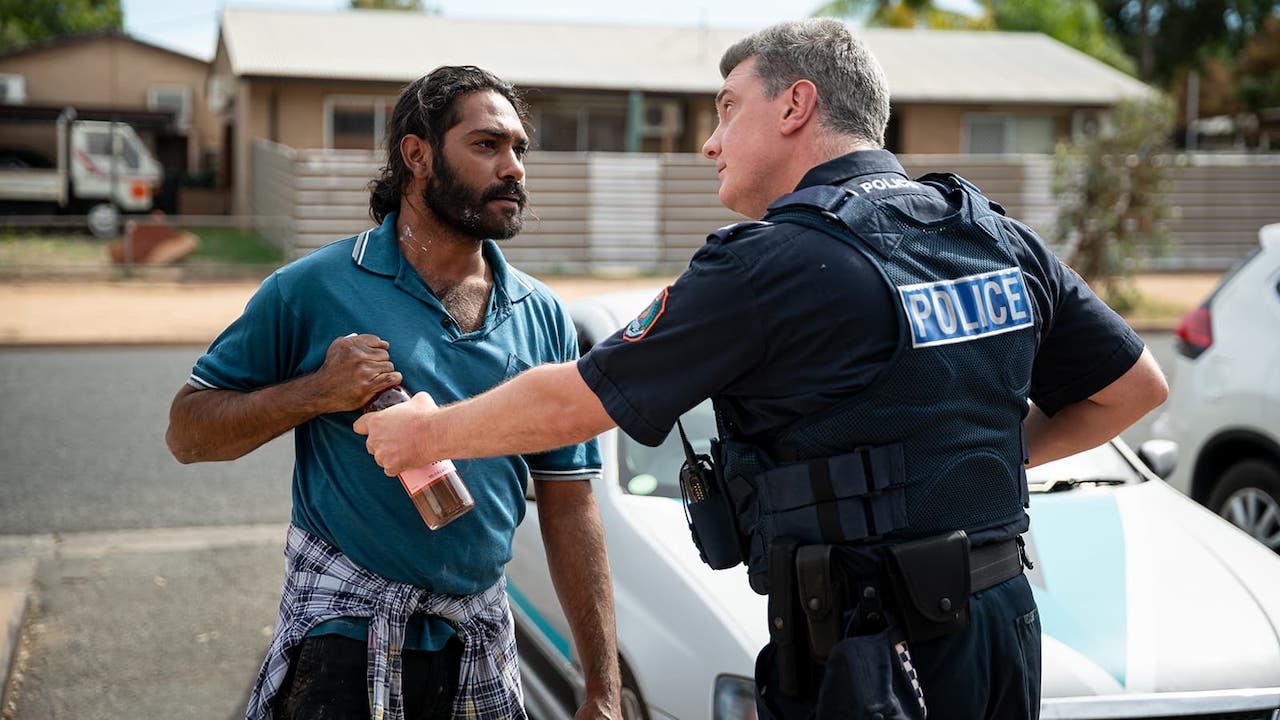First Nations anthology film We Are Still Here is a rabble-rousing treat

War stories, animation, rom-coms: We Are Still Here presents a wealth of Indigenous filmmaking talent, and Stephen A Russell found the anthology uniformly stirring.
We Are Still Here (2022)
For the second year running, the Sydney Film Festival has opened with an anthology film from an exciting array of writers and directors exploring the stories less well told on Australian screens. Last year it was Here Out West, championing filmmakers from Western Sydney and celebrating the rich diversity of the country’s most multicultural corner.
This year the scope is even bigger, with We Are Still Here presenting an exhilarating collection of interwoven tales exploring centuries of First Nations experience before, during and after the cataclysmic arrival of Captain Cook.
A joint initiative between Screen Australia’s Indigenous Department and the New Zealand Film Commission, it opens with “Lured”. Written and directed by Danielle MacLean, a Luritja/Warumumgu woman, it’s a vibrantly animated sequence with the sketched quality of a graphic novel brought to life. It depicts a mother and daughter fishing together in a canoe out at sea, with the waters below teeming with life. But this utopian vision is almost immediately torn asunder as their line catches and a great beast rises from the churning waves.
The leviathan revealed is actually a towering ship from the murderous first fleet, rising like a terrifying ghost vessel as thunder and lightning splits the sky. It’s a striking vision that sets the tone of this collection that explores the ramifications of the British invasion of the region and the long shadow cast, but also champions hope, resilience and the fighting spirit of so many First Nations who never ceded.

A rabble-rousing gathering, unlike many films stitched together from thematically linked shorts, each of the eight constituent films are broken into bite-sized bits that weave in and out of those that follow. It’s an intriguing structure that allows for cliff-hangers that keep you gripped from one to the next, with “Lured” spanning many centuries to depict the encroachment of a vast electrified cityscape, with echoes of Blade Runner, and the loss of tradition.
It shares a lot in common with Samoan filmmaker Chantelle Burgoyne’s exciting “Blankets”, another future-set yarn with hints of Mad Max in its climate collapsed and poisoned landscape and roughhouse bartering for the basics of survival. Written by Tiraroa Reweti, it’s led by a spirited performance from Willow Rupapera as a young woman wrestling with what it takes to make it to tomorrow in this new normal.
One of the strongest sequences comes from emerging directors and Māori men Tim Worrall and Richard Curtis. Set on the eve of the fateful Battle of Ōrākau in 1864, “Te Puuru” depicts a meeting of the Ngāi Tūhoe peoples and a fierce debate over whether to fight the invading British forces, or to stay out of it and pray that war does not come a-knocking on their door.

An origin story of sorts for the mighty haka, this brilliant sequence is lit up by the fantastic presence of Tioreore Ngatai-Melbourne as a young woman determined to convince her father (Te Wakaunua Te Kurapa) to stand up and be counted. A powerful chapter, it’s also the most visually arresting film and showcases uniformly compelling performances.
A different perspective is offered on the bloody mire of the devastating Gallipoli camping in “The Uniform”. Directed by Samoan duo Miki Magasiva and Mario Gaoa, it stars a luminously charismatic Villa Lemanu as a soldier stuck in a muddy trench who strikes up an unlikely and increasingly fantastic friendship with a Turkish “opponent”. It injects an unexpected and welcome dose of zany humour into proceedings. That’s the joy of We Are Still Here. Sure, it features harrowing stories like Dena Curtis’ Frontier War massacre story “Woke”, but it also makes room for an effervescent romcom like director Beck Coles’ brilliant “Grog Shop”.

Written by Samuel Nuggin-Paynter, it stars Cleverman’s Clarence Ryan as a scene-stealing tradie who is besotted with a bottle shop attendant. But even this fun sequence has a darker edge, lampooning the worst excesses of the Northern Territory intervention via the mean-spirited and not-so passive aggression of Dan Humphries’ boofhead cop. Cole traces a fine line between biting social commentary and crowd-pleasing cuteness, with the results abundantly joyous even as your blood boils.
That’s what We Are Still Here celebrates: thousands of years of continuous excellence in spite of certain sorry empire’s worst efforts, and that’s to be applauded.


















